Thinking about raising your own chickens for meat, but aren’t sure how to get started? Here I’ll show you a week-by-week look at How To Raise Cornish Cross Chickens For Beginners.
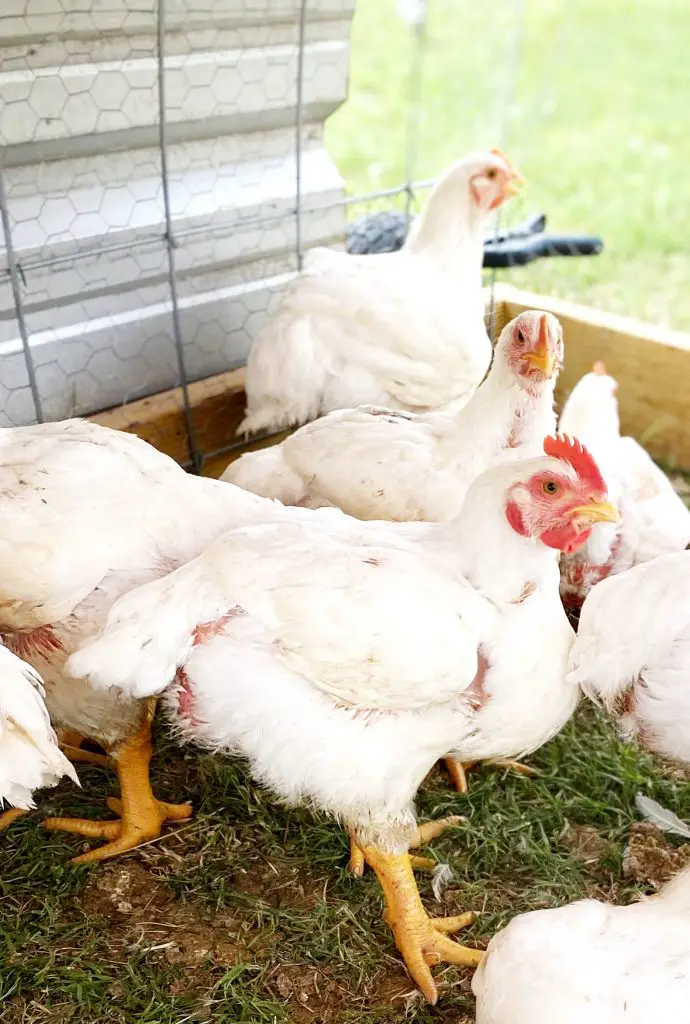
How To Raise Cornish Cross Chickens For Beginners
First, I want to start off by saying I am not a chicken expert. I’m not a well experienced, generational farmer. I don’t even really feel qualified to write a definitive, all-encompassing “how to raise meat chickens” post since we’re still new at this. But I did want to share our experiences and be an encouragement and let you know, if we can do it…you can too!
It has been our dream for over 5 years to raise our own meat. I am so proud of us for taking the plunge and actually doing it! After all, the only way to become an expert at something is to actually do it right? Not saying we’re ‘experts’ now, but practice makes progress.
We decided to start with 25 Cornish Cross meat chicks this spring. (I’ll explain why we went with this breed in a bit) It went so well, we’re planning on getting 25 more this fall! That way, we’ll average about one whole chicken per week. And for our family of six, that should be plenty! We may get more to help out our friends and family but that’s the plan for now.
Interested in learning more about egg laying chickens as well? Check out my post about How To Choose The Best Breed of Backyard Chicken HERE!
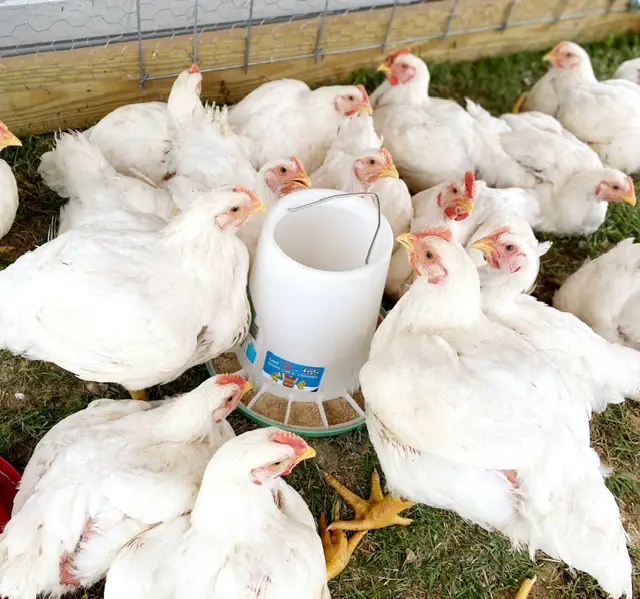
The Great Meat Chicken Breed Debate
Did you know Cornish Cross meat chicks are a rather controversial breed? Neither did we. Ha! As we began researching to try and decide what our options for meat chicks were, we discovered there are some pretty strong opinions about breeds.
If you don’t already know, you may be wondering what makes the Cornish Cross breed controversial? We wondered the same thing. We found that Cornish Cross birds are a ‘hybrid’ breed, or a cross between a Cornish and White Plymouth Rock.
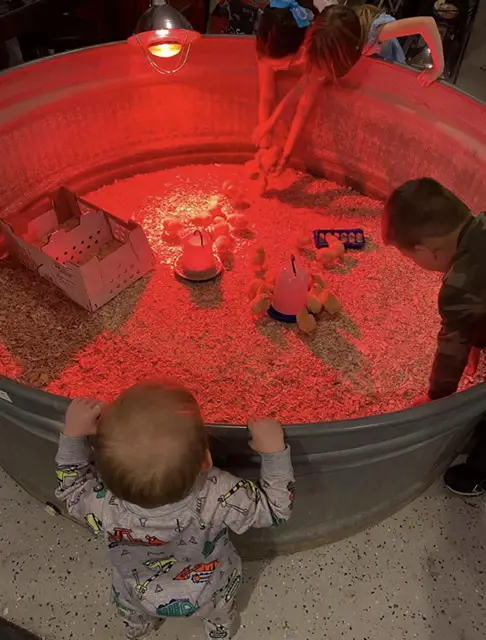
While they are a ‘hybrid’ breed yes, they are not a genetically engineered breed-there’s a big difference! There were some groups calling them a ‘frankenbird’ with strong feelings against homesteaders raising them. While this is not true, there are some major pros and cons to this breed. (Just like other breeds)
Pros:
- Fast Growing Breed
- Heavy Meat Producer
- Profitable/Economical
Cons:
- Prone to leg issues/heart attacks due to rapid growth
- Not recommended for reproduction/Not sustainable for the long term
- Can require a lot of feed
I’m happy to say we didn’t experience any of the horror stories that seem to float around about Cornishes and their poor health. On the contrary, our birds were very healthy and got around just fine. We let our birds safely free-range in our fenced back yard and they did great!
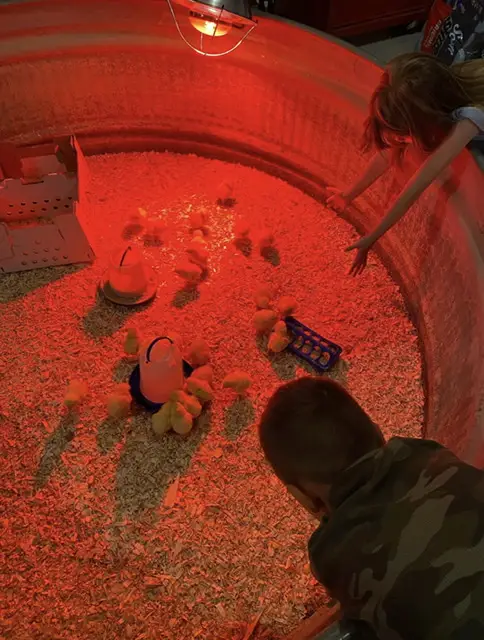
Our main hesitation, was that cornish chickens are not recommended for breeding because they would be too large by the time they reach sexual maturity. For our farm/homestead, our goal is to be as independent and self-reliant as we can. And by not being able to breed these chicks ourselves that means, we will need to purchase new chicks each year.
But in the end, they grow a greater amount of meat in a shorter period of time so that’s the option we went with.
How To Raise Cornish Cross Chickens For Beginners
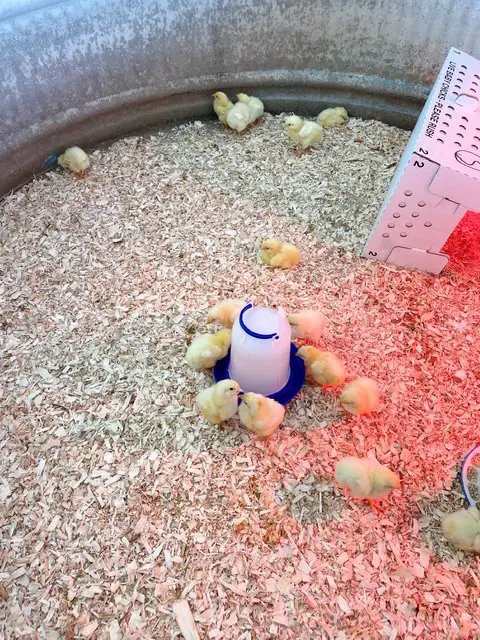
What To Feed Your Meat Chickens
Keep in mind that this is a post for ‘beginners’ so I’m assuming that you, like us, have never raised meat chickens before. We did not feel comfortable enough making our own meat chicken feed right out of the gate so we actually purchased our feed at Tractor Supply and the feed store. Personally, we thought it best for us to not completely overwhelm ourselves with new information and suffer from burn out our first time.
Proper protein content is important for fast-growing meat birds so we just opted to purchase feed this time around. Our friends and neighbors showed us how to ferment our feed to make it last longer so we will be trying that next time.
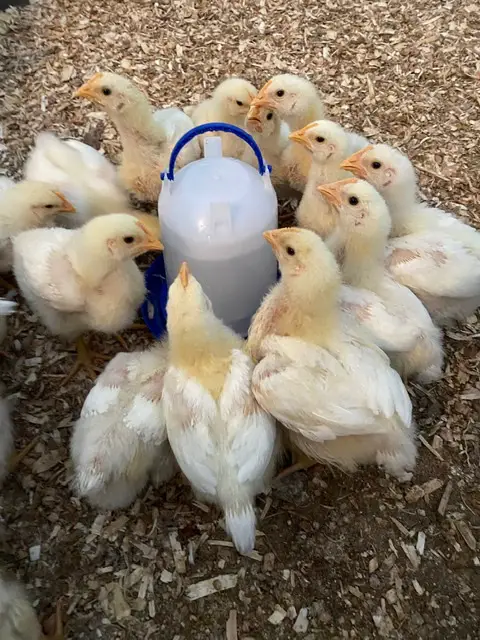
We started our chicks on Purina Organic chick starter/grower. Then switched them over to Nature Wise Meatbird crumbles when they were about 3 weeks old.
So How Much Does A Meat Chicken Actually Eat?
This was actually our first time raising chicks because we’ve always purchased laying hens that were already laying. So we really weren’t sure what to expect in regards to the amount of feed they would need. All we had ever heard is how much meat chickens eat.
To start, we got a ‘chick starter kit’ for our chicks because like I said, we had never dealt with chicks before. We bought a 25lb bag of the chick starter feed and that actually lasted us until they were about 3 weeks old. However, they definitely drank more than ate! I would fill the feeder 2-3x per day, but the waterer about 5 times.
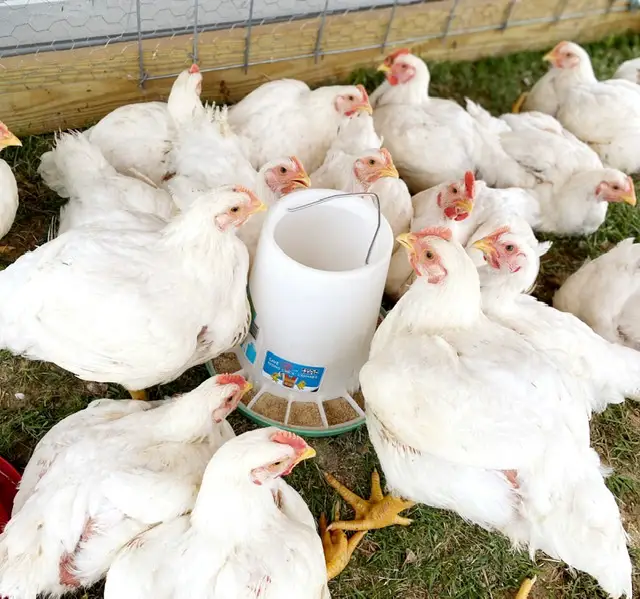
As they got older we moved them outside so they could ‘free range’ in their chicken tractor in addition to the store bought feed. Of course, they were much bigger at this point so we got a bigger feeder as well. I would refill the feeder 3x daily. Once in the morning at 7:30, again around 12 and in the afternoon around 4. We heard it was good to pick their food up and ‘give them a break’ over night so we would put their feeder up every night around 8.
Shelter For Cornish Cross Chickens
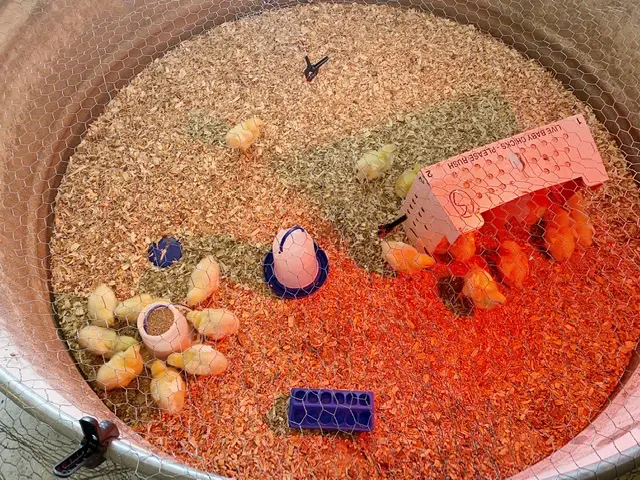
Our meat chicks arrived April 5th so it was still rather chilly out so we kept them in a large stock tank in our garage. We definitely got some strange looks when people heard we were keeping them in our garage but it was totally fine! And it actually made the constant feeding and watering more manageable for this busy mom.
We just took the large stock tank and filled it with pine bedding and hooked up a couple heat lamps. Our farm cat also sleeps in the garage at night so we put chicken wire across the top just in case 🙂
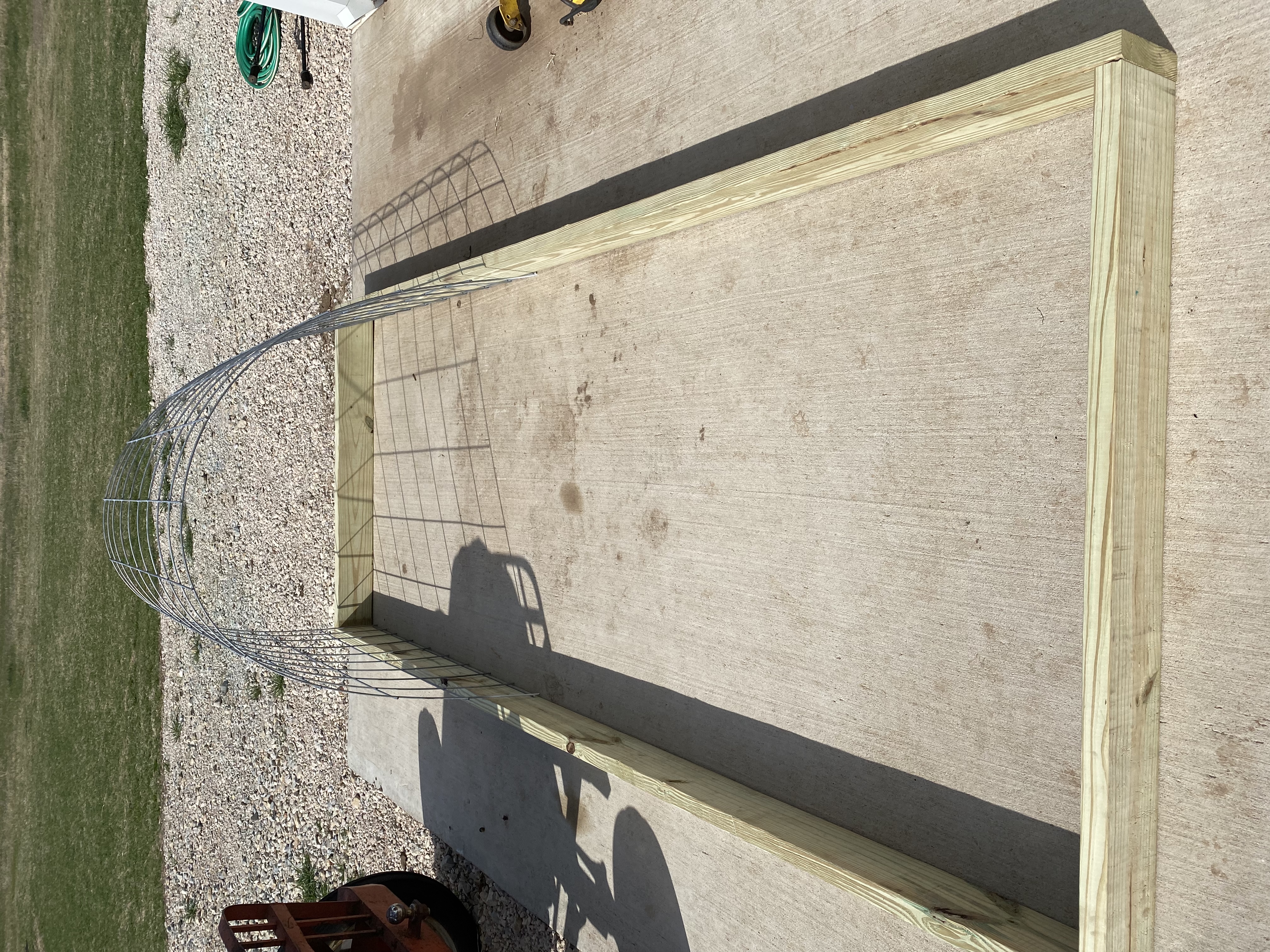
They out grew the tank when they were about 3 weeks so we moved them into the chicken tractor. My husband and I made this little tractor and while it wasn’t the most aesthetically pleasing, it worked just fine. We’re in the season of life where practicality is more important than looks. At least on the farm. Ha!
It was pretty easy to put together and if you’re interested we can share in detail how we made it. We kept the tractor in our fenced backyard. Which again, people would look at us disgusted but it’s a very big ‘backyard’ and it was actually amazing fertilizer! I don’t think our grass has ever been so green. I would move the tractor about 2x per day and it kept the chickens and the yard ‘clean’. Because if you haven’t already heard, meat chickens eat and poop a LOT.
When Are Meat Chicks Ready For Processing?
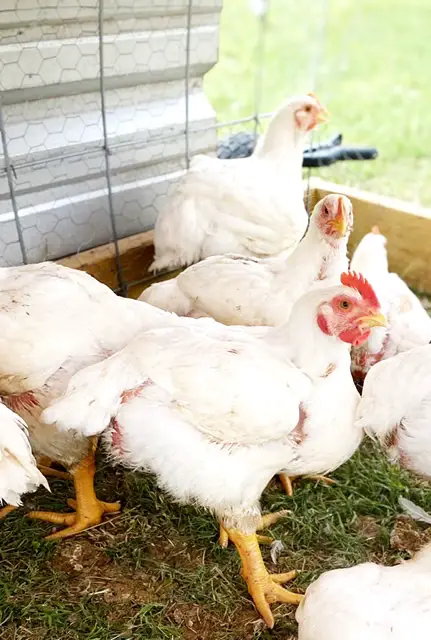
Meat chicks are ready for processing aka butchering around 8-10 weeks of age. We referred to it as ‘processing’ at our house to help our kids better cope with the fact that we will soon be butchering and eating our little chicks. Keep in mind, this was our first time ever doing anything like this! My husband isn’t a hunter and neither one of us grew up on a farm.
We processed our birds when they were 8 weeks and 5 days old. We have four kids and very busy lives (as many of us do!) so we had to schedule it around our kids schedules, vacations etc. We processed them at the same time as our neighbors so we coordinated our schedules so our chickens would all be ready around the same time and it worked great.
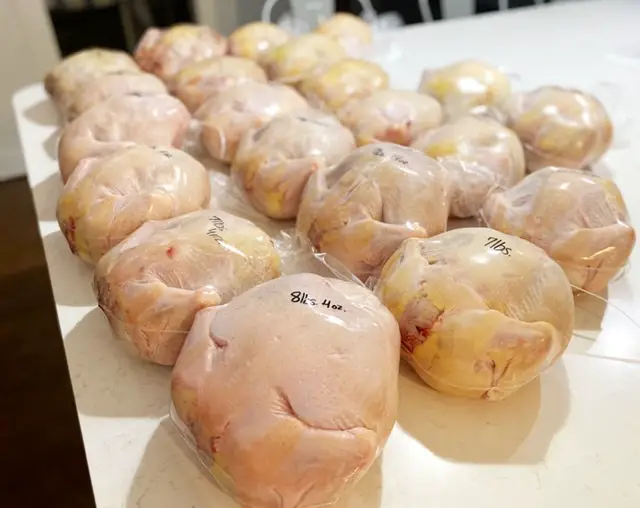
Our biggest bird was 8 lbs 11 oz after processing so ours got pretty big! ( At least we thought so!) Our smallest was still 5 lbs 5 oz fully processed so we thought for beginners that was a pretty good outcome.
Processing Your Cornish Cross Chickens

That is a whole other ‘process’ so I will have to write a separate post on that, but I will for sure share our ‘first time’ experience meat processing. Like I mentioned earlier, we were beyond blessed to be able to process our birds with our very kind neighbors. They were generous enough to share their very high end equipment with us so it made the process very smooth. I look forward to sharing that with you all.
As always, thank you for following along on our journey. Sending love and best wishes from our family to yours!

Leave a Reply